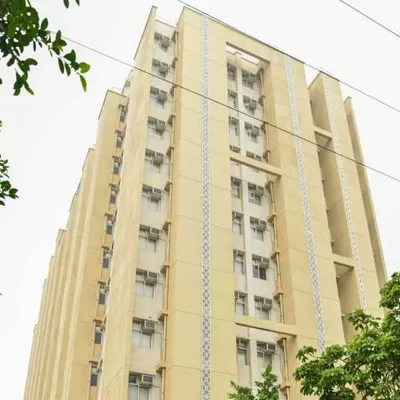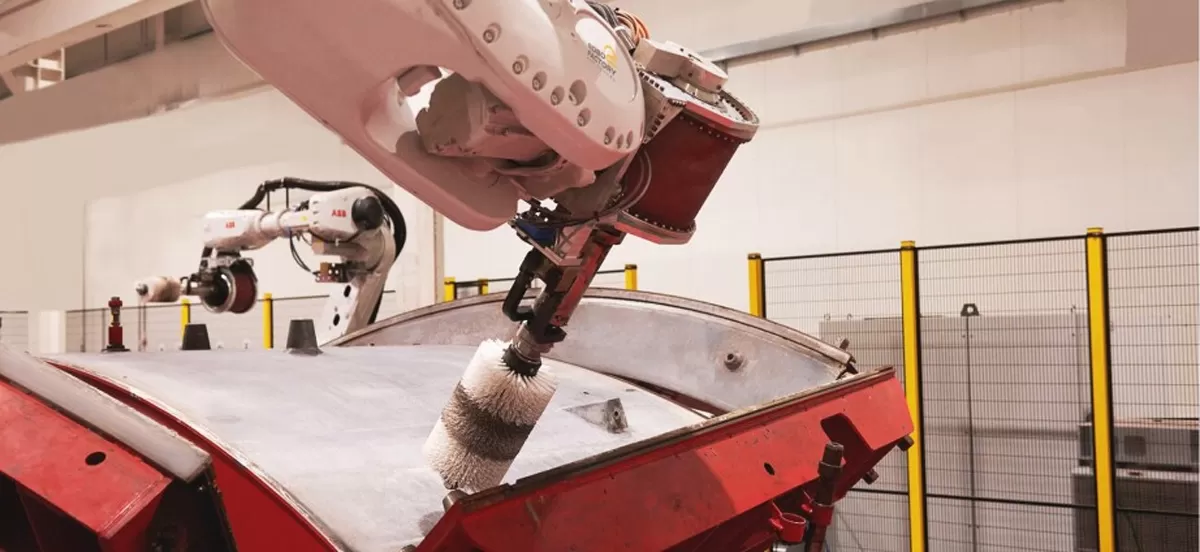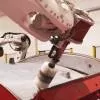Guru Gobind Singh Refinery
01 Aug 2012
7 Min Read
CW Staff
The Guru Gobind Singh Refinery (GGSR) set up in the heartland of India – Punjab – will meet the growing requirements of the northern domestic market.
GGSR is a mega grassroot, 9 mmtpa refinery complex spread across 2,000 acre at Bathinda in Punjab. The project has been integrated with the single point mooring (SPM) system, crude oil terminal and a 1,017 km, cross-country pipeline executed by Engineers India Ltd (EIL) from conceptualisation to commissioning in a single phase.
The project has been set up by HPCL-Mittal Energy Ltd (HMEL) under the public-private partnership model – a JV bet-ween Hindustan Petroleum Corporation Ltd (HPCL) and Mittal Energy Investment Pte Ltd, Singapore – a Lakshmi Mittal group company having 49 per cent shares with the balance 2 per cent held by financial institutions. The project was kickstarted on November 14, 2007, with the contract of consultancy services awarded to EIL. With a total estimated budget of Rs 16,805 crore, the committed cost of the project as on June 30, 2011, was Rs 17,493 crore.
Salient features
Overall, the refinery has been built to be energy-efficient, environment-friendly and high-distillate yielding. Diverse environment protection measures have been inculcated in the design of all its project facilities including the sulphur recovery units (SRU), state-of-the-art effluent treatment plant (ETP), vapour recovery system, low nox burner, and in the production of clean fuels and polypropylene by processing heavy, sour and acidic crudes.
Some of its other salient features include a SPM to receive crude oil from a very large crude carrier with 320,000 DWT, installed 7 km away from the shore near Mundra, Gujarat. This SPM is connected by a 48|| diameter pipeline between the offshore and onshore facilities to transfer the oil to the crude oil terminal (COT). This terminal is equipped with 14 tanks with a 66 m diameter, 19.5 m height and a capacity of 60,000 kl at Mundra. From here, a Mundra-Bathinda pipeline, which is 1,017 km long, crosses five rivers with an intermediate pump station, two pigging stations and 29 sectionalising valve (SV) stations, with the final crude receiving terminal at Bathinda.
Engineering marvels
Apart from its other many achievements, this state-of-the-art refinery used structural steel that would have been enough to build 15 buildings of the size of the Eiffel Tower, each 320 m high. Moreover, the amount of cement and concrete used in the refinery would have twice built the world’s tallest building, Burj Khalifa, with each structure 829.84 m high. The chimney of the refinery, on the other hand, competed with the tallest minaret in India – the Qutub Minar. It stands at double the height of the Qutub Minar at 141.7 m. The Mundra-Bathinda pipeline stretching across 2,000 acre is long enough to cover the distance between Delhi and Mumbai and more. Finally, the crude oil terminal at Mundra and crude oil pipeline are sufficient to store three days worth of India’s crude oil requirement.
One of the biggest challenges in constructing the project was in transporting the three reactors ranging from 700 MT to 850 MT – the heaviest cargo in India at over 2,100 tonne – from Kandla Port to Bhatinda across 1,490 km.
Project implementation
One of the most important aspects in executing a project, especially for one of this capacity, is an efficient project implementation plan. At GGSR, a task force comprising a core group of personnel familiar with fast track project execution was identified. The overall project network was developed on Primavera, clearly identifying the critical paths. A target of 39 months for mechanical completion was set for monitoring. This was then broken up into identifiable milestones and deliverables, with specified dates for completion of each activity.
Planning
All the schedules, progress reports and material for review meetings were monitored and prepared on the basis of the 39-month target schedule. Critical milestones, which controlled the mechanical completion, were identified for every six months. An erection agency was appointed well in advance based on the study of the heavy lift equipment. A field engineering cell, comprising piping and structural services on a permanent basis and general civil, electrical and instrumentation as per requirement, was implemented to prevent loss of time in communication tangles. Moreover, a set of teams, including independent piping and process engineers, was formed for each unit to crosscheck the ISOs vs piping and instrumentation diagram (P&ID) to avoid any mismatch during construction.
Procurement
The bidder qualification criteria (BQC) were kept to a minimum. A two-stage bidding methodology was adopted, and the price bid was invited after finalising the technical and commercial requirements. Monthly management review meetings were held with critical contractors to emphasise additional resource deployment. At a critical stage, decisions were taken to offload work from the main contractors and award it through a quick tendering process to other available contractors at site. For instance, the civil and structural work and underground piping was off-loaded from Petron and IVRCL to other contractors. And, composite work comprising equipment erection, piping, electrical, instrumentation, insulation and painting was awarded for all downstream units to Larsen & Toubro.
Moreover, addressing the non-availability of the required capacity crane(s), the client organised for these and made them available on a rental basis. At the peak of the project, a 40,000-plus strong labour force was working onsite. The client made arrangements for toilet, food and drinking water facilities to prevent maximum absentees. Finally, urgent material procurements for piping, electrical and instrument items were executed to facilitate quick implementation of related aspects.
Sure success
The project implementation plan, being elaborate, was undoubtedly marked with many challenges, which the players met head on. In order to meet targets, a number of engineering activities were outsourced on short notice. Value engineering exercises were conducted at regular intervals by reviewing all engineering documents. This resulted in huge savings. Moreover, all FCC columns were designed as per ASME Section-VIII, Divn 2 specifications, and the need for a second set of hydrocarbon flares exclusively for FCCs was avoided by using separate cooling water systems. This not only cut costs but also saved the time required for implementing the two sets of flare headers due to the heavy flare load during upset conditions.
In procurement, prefabricated transfer line spools for crude/vaccum distilliation units helped minimise clad welding at site. All long lead items were ordered ahead of schedule to reduce any delay in fabrication or manufacture. Zero material take-off for piping material was taken much ahead of schedule of the mechanical executions. Finally, precast of major RCC structures aided in crunching the construction period – an 8 km pipe rack, 3,000 pipe sleepers and 60 pipe-way bridges were precast and erected.
In construction, modular assembly and erection of critical structures facilitated timely construction. Around 1,800 cu m of RCC was poured at a time in 30 hours with seven batching plants and 30 transit mixers. The peak RCC productivity was
1,000 cu m per day. Moreover, an automatic piping welding shop facilitated around 5,000 ID of weldings per day by a single agency. And, a total of 11,400 ID was achieved per day for the complex. An average of 500 joints per day were radiographed in high thick concrete wall bunkers on a 24 x 7 basis at a fabrication yard. In addition, safe radiography sources were deployed (with a 3-5 m cordon-off distance) without disturbing construction.
Overall, the mechanical completion, achieved 42 months after receiving the process package, exemplifies owner-consultant cooperation with the common objective of completing the project within the minimum schedule and cost.
Construction highlights:
• Heaviest equipment erected in a single piece: 780 MT VGO reactor (5.5 x 24.4 m)
• Heaviest equipment: 1,222 MT C3 rectifier columns in FCCU erected in six pieces
• Heaviest erection crane: 1,200 MT
• Tallest equipment: Above ground: C3 rectifier and stripper columns in FCC (70.4 m) Underground: Propylene/LPG bullets (84 m)
• Highest diameter: 15.1 m for FCCU regenerator
• Tallest structures: Flare stack, 150 m; Coke drum structure, 112 m; CPP chimney, 100 m
• Total work force at site: 30,000
Project details:
Main contractor: Engineers India Ltd, Tel: 011-2676 2121. Fax: 011-2618 6245. E-mail: eil.mktg@eil.co.in Website: www.engineersindia.com
Composite work: Larsen & Toubro, E-mail: info@larsentoubro.com Website: www.larsentoubro.com
Raw water treatment plant, effluent treatment plant, RO-based DM plant: Hindustan Dorr Oliver, Tel: 022-2835 9400. Fax: 022-2836 5659. E-mail: hdoho@hdo.in
Nitrogen plant: Air Liquide, Website: www.airliquide.com
Cooling tower and treatment plant: Paharpur Cooling Towers, Tel: 033-4013 3000. Fax: 033-4013 3499. E-mail: pctccu@paharpur.com






















